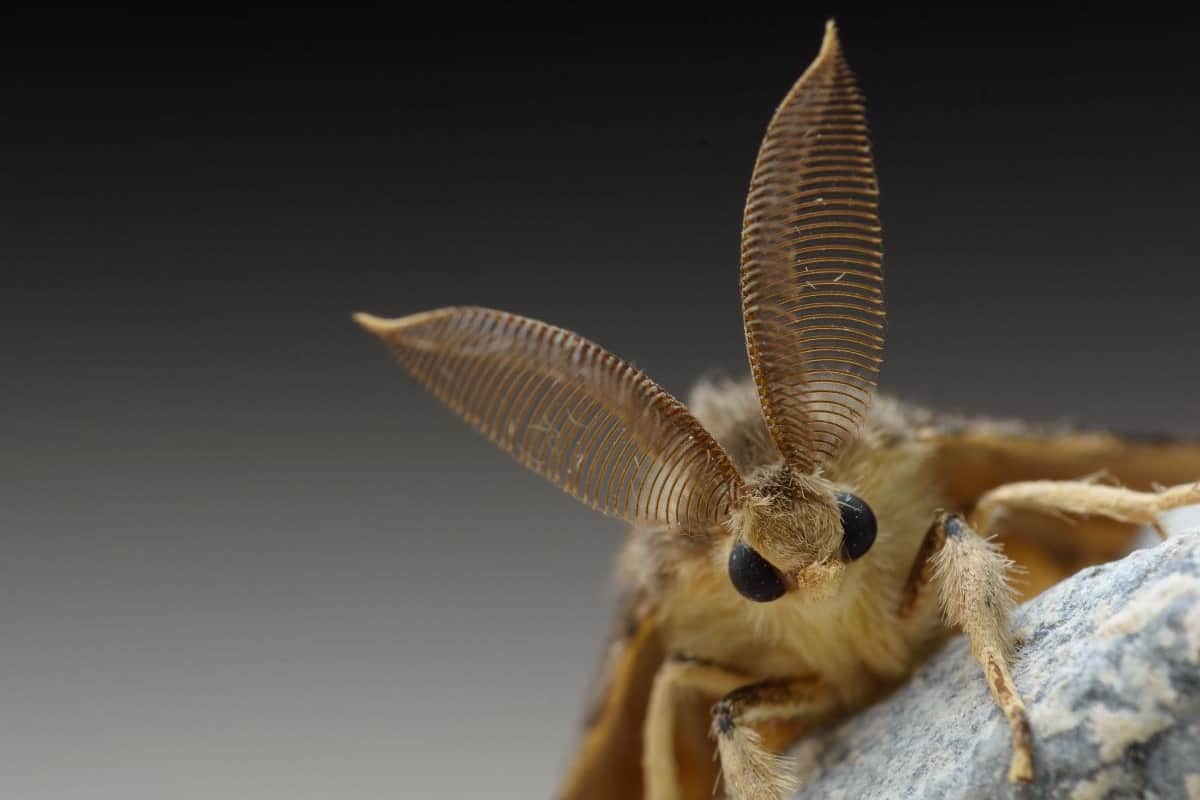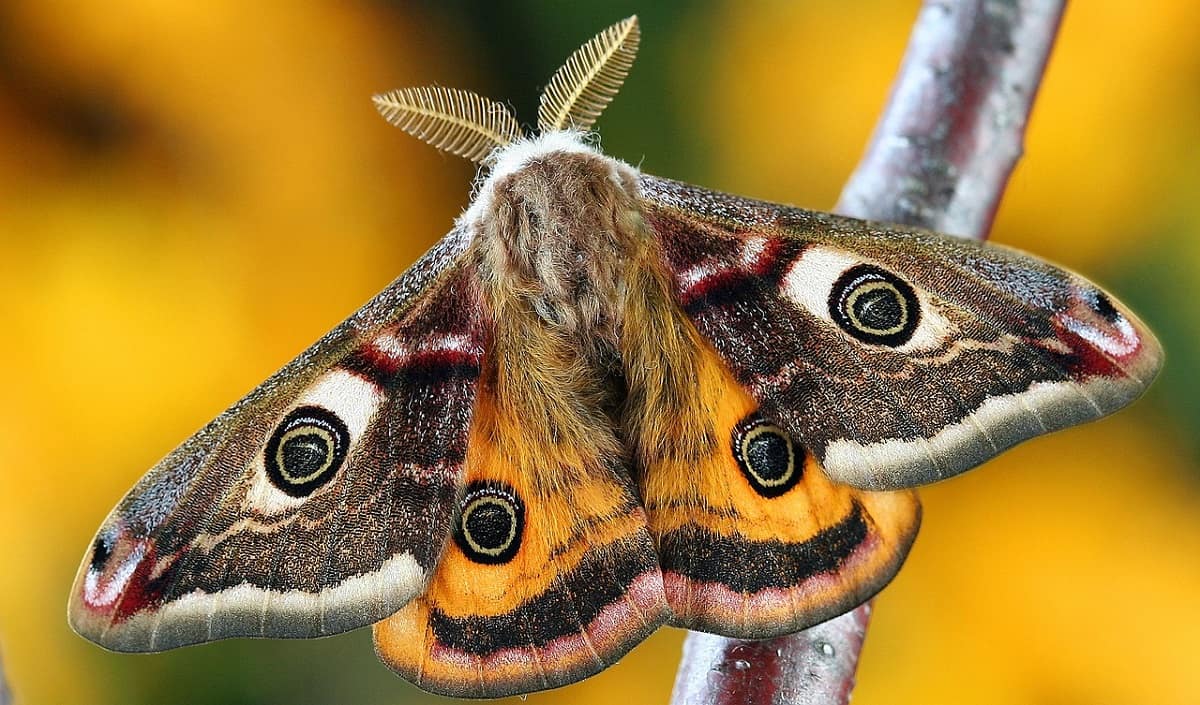Moths and butterflies belong to the same group of insects, which is the order of Lepidoptera. As such, they share more than a few similarities, making it confusing to distinguish them sometimes. Despite their shared ancestry, are moths and butterflies hostile towards one another or do they get along?
Typically, moths and butterflies can coexist in the same location. They are active during different periods, butterflies in the day and most moths at night. So, despite having a similar diet, they will rarely fight for food or territory.
Moths and butterflies have many common traits but also some key distinctions. And in this article, we will see how these similarities and dissimilarities play a role in their co-existence.
Do Moths and Butterflies Live in the Same Territory?
The Lepidoptera group of insects have conquered so many different regions. If there are plants for the caterpillars to feed on, it is a pretty safe bet that these creatures can be found there. From the top of mountains to even underwater, moths and butterflies have a diverse range of habitats.
For this reason, many species of moths and butterflies can be found in the same region but at different times. Both of them can be seen hiding under leaves, inside cracks, or crevices when the condition is unsuited. And when they are active, they fly around in search of food and to find a suitable mate.
But the reason you will not often see them together is due to their behavioral pattern.
The majority of moth species prefer to fly around during the nighttime. So, they have developed certain features that aid their moonlit adventures. Butterflies are on the opposite of that spectrum, remaining active during the day and then resting at night. (also see: Moths And Sleep – No One Talks About)
Since they work in different shifts, there is no inclination to fight for food or territory.
So, moths and butterflies can, and often do, live in the same location. But based on the time of day, they will show different behaviors and flight patterns.
Do Moths and Butterflies Eat the Same?
Butterflies and moths have nearly identical dietary needs. This is mostly because they have comparable biological attributes. They feed on leaves, flowers, nectar and many other biological substances.
The caterpillars of moths and butterflies will solely feed on plants to develop further. Some species have a preference for only one type of plant or a group of plants. For example, the caterpillars of monarch butterflies have a particular fondness for milkweed while the clothes moths feed on natural fabrics.
With a few exceptions, adult moths and butterflies have a strict liquid-based diet. They do not possess a traditional mouth that is capable of chewing or biting. Instead, they all have a straw-like appendage for drinking. They primarily acquire the necessary liquids from plant nectar, animal droppings, tree sap, etc.
One of the most notable exceptions to this is the harvester butterflies. With their sharp proboscis (their version of the tongue), they can pierce the bodies of aphids and directly suck the fluid from within.
Both moths and butterflies complete almost all of their feeding as a caterpillar. In fact, caterpillars only have that one job, which is to eat and store enough energy to mature. So, adult insects do not have much need for food. Many of them will go through their entire adult life without eating anything.
Do Moths and Butterflies Fight?
Moths and butterflies have comparable dietary needs and mating processes. But they will rarely resort to fighting each other for food or territory. This is because attacking is not in their portfolio. It is not a strategy they use and they aren’t aggressive – even if they meet at the same spot for a meal, they won’t fight.
As we mentioned before, moths and butterflies are active at different times. So, they hardly encounter each other let alone get into brawls. Moths will look for mates and nectar in the darkness of the night, a time when butterflies are getting some necessary rest. And the opposite is true during the day.
Bees and wasps have a natural rivalry. Wasps attack a bee’s nest for their honey. And the bees have mechanisms to counteract their physically larger enemy. But moths and butterflies do not have such conflicts of interests.
Plus, they are not particularly built for fighting. They do not possess any stingers, claws, or appendage that would benefit them in a battle.
Of course, fighting within the species is more common. Many species of male butterflies do engage in warfare with other males for territory. Caterpillars have also shown a tendency to compete for food if supply is inadequate. But this hostility rarely exceeds their own kind.
-
Can Moths Set Off Sensor Lights: Unveiling the Truth

Many homeowners install motion sensor lights as a security measure, but what they might not have considered is the possibility of moths and other insects affecting their functionality. As sensor lights detect movement and heat, the question arises: can moths actually set off these sensor lights? Moths, being small flying insects, are capable of triggering…
-
Can Moths Make Sounds? Debunking Common Myths

Moths are fascinating creatures, known for their nocturnal habits and attraction to light. Yet, one lesser-known aspect of their behavior is their ability to produce sounds. Though it may seem surprising, certain species of moths have evolved to create ultrasonic noises as a defense mechanism against predators, particularly bats. Bats use echolocation to detect and…
-
Can Moths Change Colors? Exploring Adaptations

Many people are fascinated by the diverse world of moths and their intriguing abilities. One such ability is the potential for some moth species to change colors. This article will explore the research and findings regarding moths’ color-changing tendencies and how they reflect their environment. Color changes observed in moths are not immediate or voluntary,…
Can Moths and Butterflies Mate?
Interspecies breeding is a very rare phenomenon that almost never happens without human intervention. That is the whole point of a species. The scientific definition of species states that you can only produce fertile offspring if you belong to the same species.
And in the rare case where interspecies breeding happens, the result is not sustainable. Because the offspring will always be infertile. Meaning they will not be able to pass on their hybrid genes. The mixing of the gene pool like this also causes many defects in the offspring that can drastically increase its mortality rate.
Moths and butterflies can’t produce fertile offspring.
And this is true for the order of Lepidoptera. Even though they belong in sister groups and have biological similarities, they cannot mate with one another. Moths can only breed with moths and butterflies can only breed with another butterfly.
Even their mating process can be strikingly the same. The female insects release pheromones that lure in the males. Experts also state the patterns on their wings help to attract potential mates, which increases the chance to reproduce. When the process is done, the females focus on laying eggs while the males do not live for long afterward.
In spite of these obvious parallels, moths and butterflies will not be attracted to each other.
Conclusion
Moths and butterflies are some of the most diverse, colorful, and important species of insects on this planet. And knowing about their behaviors and way of life will aid us in preserving them for generations to come.

